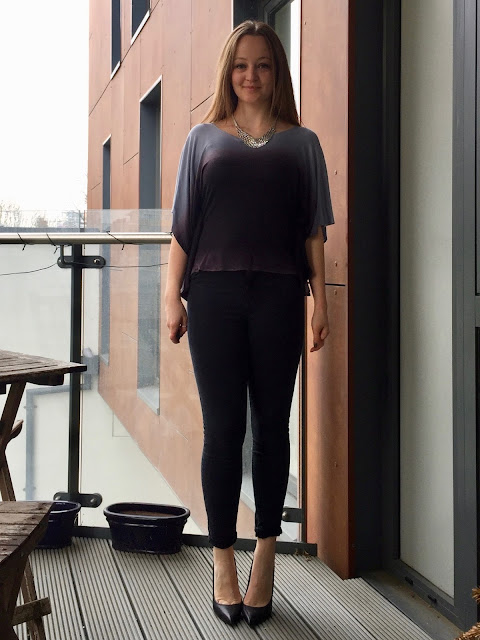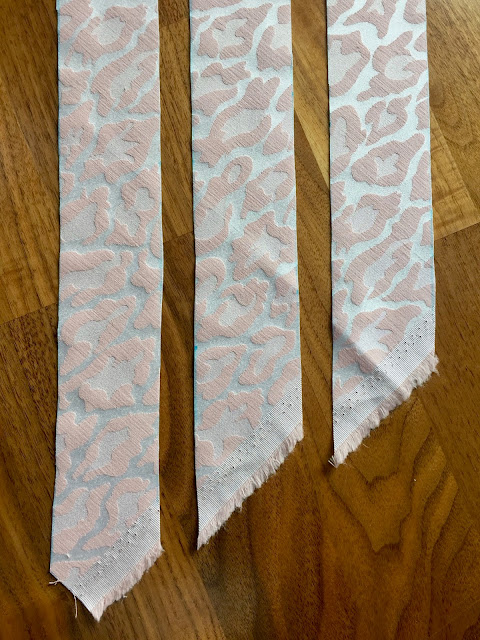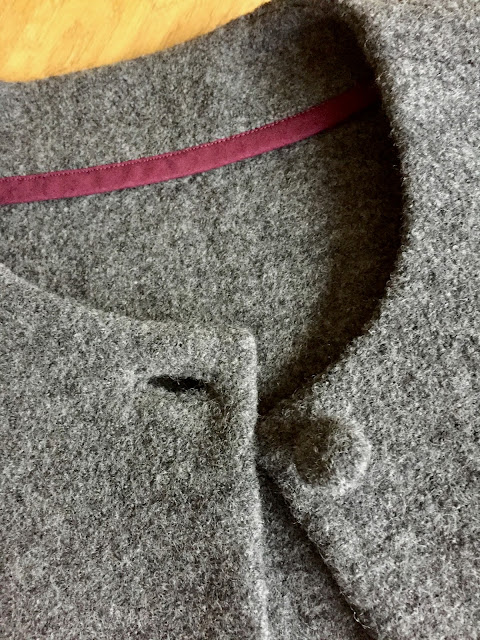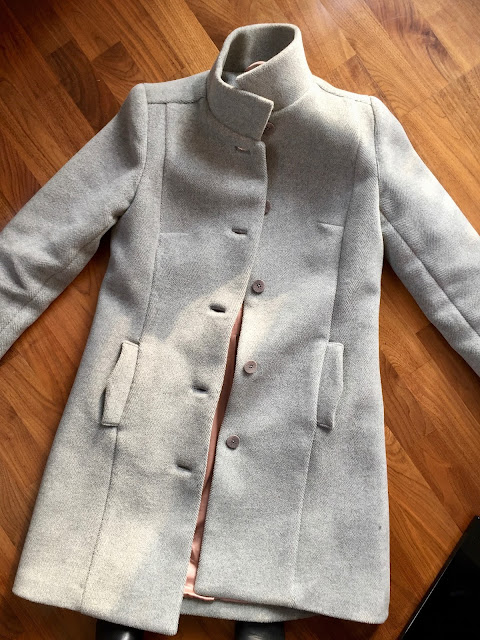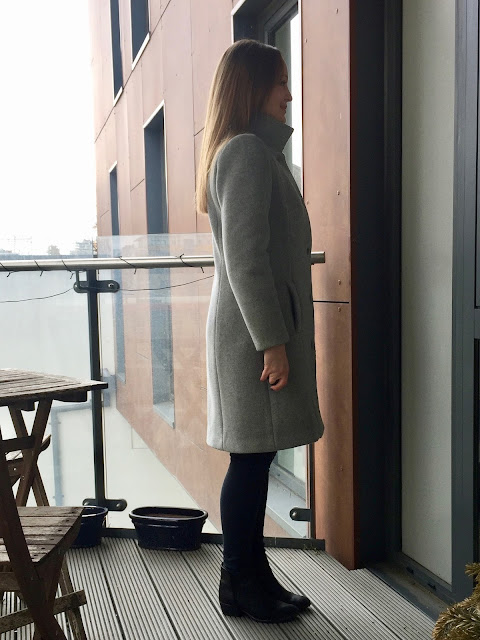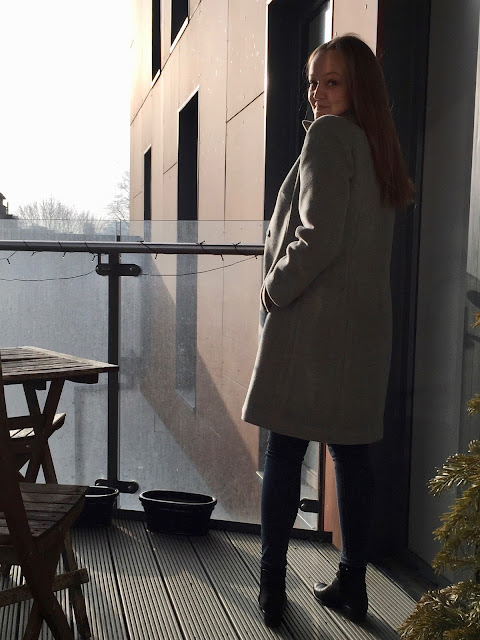Another month of 2017 has flown by and the steady stream of beautiful and inventive new pattern releases shows no sign of letting up! I've got a list as long as my arm of projects I want to sew for my spring/summer wardrobe and a pile of fabric waiting to be cut. I always feel more excited about sewing for the warmer months but this year have a couple of jackets and trousers in the works too. Let's take a look at the new releases and news from the indie sewing pattern community in March and see what you'll be adding to your sewing queue!
New Pattern Companies
- I've been following Nina from Thumblenina's blog for a while now and admire her sewing skills so I was delighted to see her launch her own pattern line, Nina Lee London. She's launched with three patterns; the Carnaby Dress, Portobello Trousers and Bloomsbury Blouse which is sure to be a big hit this season with all those ruffles!
New Patterns
- Kommatia had a busy month releasing, amongst others, PDF patterns for a boxy hooded sweatshirt, palazzo trousers and some high waisted skinny jeans. I'd love to build myself a wardrobe of their kind of basics.
- One of my favourite pattern releases of the month, purely because it's such a unique idea, is the Leverett Hook and Eye Closure pattern from Orange Lingerie. Being able to make your own hook and eye sets for the backs of you bra eliminates one of the limitations you may encounter in making your perfect lingerie set. The pattern includes fully illustrated instructions for creating one, two, three or seven hook high sets...perfect for Norma's recently released Esplanade Bra.
- Style Arc's March releases included the Elani Tunic and Lux Coat which is really appealing to me. It's an almost cape-like sleeveless cocoon shape with shawl collar. I'm also quite taken with their new Autumn Dress which is a shirt dress without the fuss; the cross over pleat at the back reminds me of the Victory Patterns Hannah.
- Seamwork released one pattern with three variations this month instead of their usual two speedy basics. The Sonya shift dress is drafted from Colette's new block with various panelling and sleeve options. As I reported last month their format has changed slightly and now bonus pattern add ons are available in the members only area.
- Named have yet again inspired me with the release of their Playground collection. It consists of eight patterns, two of which are two in one and I'm having a hard time picking which to buy! I think my favourites are the Helga Wrap Playsuit and Ronja Dungarees...what are yours?
- Jeni Smith released the Hepworth Apron. It's a big practical design and I like the old fashioned workwear feel of the tabard style with wide straps crossing at the back.
- I spotted the new release from Til the Sun Goes Down at the Knitting and Stitching Show a few weeks ago and am hoping I can find the time to make myself one for summer after seeing the samples made up in their beautiful viscose prints. The Beach Pyjama and Holiday Dress is inspired by designs from the 1930s and features a cross over front with curved bound edge which I fell in love with.
- Kennis from Itch to Stitch released the Tierras Woven Joggers and Newport Top patterns. I spotted a tutorial she posted earlier this week for adding ankle zips to the joggers which is a lovely feature to make these a little more luxurious looking.
- A big hit on Instagram, Victory Patterns released the Jackie Dress. My favourite part of this design, aside from the combo of fitted bodice and flowing skirt, is the high neckline fastening at the back with three buttons and rouleau loops.
- After launching their first patterns a couple of months back Trend Patterns released the first in their basics line. TPC5 is a frilled hem top and TPC6 is a pleated front trouser which I have seen modelled in person and absolutely love the fashion forward and contemporary shape of.
- Sew Different released a FREE pattern for an Artist's Smock. The wide funnel neck is really cool. It's only available in a size 12 and has no instructions as it's quite a basic shape but there is a page the website explaining how to adjust it.
- New from Sophie Hines are the Arccos Undies. They are a simple and classic hip hugger style panty with forward sides seams perfect for showing off interesting combinations of contrasting fabrics.
- The latest In The Folds pattern to be released as a free download with Peppermint Magazine is for a pleated skirt. A mainstay of any summer wardrobe.
- Mimi G released a PDF Jumpsuit pattern which has a fab seventies feel with its patch pockets and collar with centre front invisible zip. You can choose to make it with a flared leg or slim cuffed trousers.
- Made for Mermaids released the Mama Isabel Wrap Top, Mini, Dress and Maxi which is the adult version of their children's pattern of the same name. It's designed for knits and includes two bodice options, three sleeves and no less than six skirt styles to choose from!
- One pattern which secured an immediate place in my pattern collection this month was Flint from Megan Nielsen. This pattern for wide legged cropped trousers or shorts is just the shape I have been looking to add to my wardrobe. I can't wait to figure out how the clever side tie or button fastening on the waistband works. She also launched the Rowan fitted tee or bodysuit which should cover every eventuality with three neckline options and sleeve lengths.
- Jenny from Cashmerette released the Dartmouth Top. This cross over jersey style is super flattering on all body shapes and the banded neckline is carefully drafted and constructed to prevent the dreaded gape.
- New from Straight Stitch Designs is the Bryant; a bias cut knit dolman top with boatneck and two sleeve options. Perfect for lightweight knits the bias cut gives the style extra drape and I'm enjoying the dropped shoulder.
- Deer & Doe launched their spring/summer collection comprising of three new designs. The Hoya Blouse, Goji Skirt and Shorts and Luzerne Trench Coat are all available in PDF as well as paper form for the first time. All the PDF patterns are available up to size 52.
- Another lovely French release this month is the Austen Blouse and Dress from Dessine Moi Un Patron. The scalloped collar combined with drawstring waist is super cute and they've chosen some lovely fabrics for the samples.
- Clearly another month when the blossoming French pattern industry hits it out of the park. Ready to Sew released the Jolene Dress and Blouse which is a classic shirt dress with gathering into the princess seams and lightly gathered skirt or peplum.
- Pinda is a new pattern for slim utility style tapered pants from Waffle Patterns. I can see these styled well for casual or a more dressy look making use of the various pocket options.
- This month's PDF release from Sew Over It is the Kimono Jacket. A great layering piece for the warmer months the expanse of fabric is a lovely way to showcase a beautiful bold print.
- I love the flowing, floaty nature created by the gores in the new Daintree Skirt from Blank Slate Patterns. It's a half circle wrap skirt in a number of lengths and the curved front edge really adds to its romantic feel. They've also released the Fairelith Top which has a ballet neckline and raglan sleeves; the instructions even advise on how to adjust the neckline to cover your bra straps which is a great touch.
- Sew This Pattern released the Daphne Day Dress which is a lovely fit and flare dress with some slightly more challenging features that would be great for an improving seamstress. the cut out back and exposed zip are great unexpected touches.
- New from Sew Caroline is the Coffee Shop Dress; a shift style for knits. You can get its for free at the moment if you pre-order a copy of her book 'Sew Caroline Weekend Style' which is coming in April.
- Hey June Handmade launched the Trevi Top and Dress which is a button back trapeze shape with high cut out shoulders. I'm really drawn to breezy swinging viscose styles for this summer so I've got my eye on this.
- I was excited to discover Alina Sewing & Design Co. this month and was doubly excited when I spotted their latest release, the Hampton Jacket. It's a great pattern for a classic denim jacket and has been released alongside a full online sew-along.
- Another new discovery for me in March is On The Cutting Floor. They just released the Cut Out Cardigan, Tank and Leggings set and as I'm really getting in to my activewear at the moment the unique design of the pull on top with deep v back and panelled leggings are really appealing to me. Also new from them just a few days ago is the Victoria Top and Dress.
- Jennifer Lauren Handmade released the Juniper Cardigan. I've been enjoying a new found love for jumpers, sweaters and high necklines over the last few months but perhaps spring is a good time to turn back to the classic cardigan and this pattern provides plenty of scope for great layering pieces.
- The new season patterns from Liesl & Co are the Classic Shirt and Soho Shorts & Skirt. Both satisfying projects and true wardrobe staples.
- I've been meaning to try a Wear Lemonade pattern for a long while and how can I possibly resist the new Fiona Dungarees when we share a name?! I recently purchased a pattern for a classic pair of denim dungarees but would also love to make a softer version in a fabric with drape and this pattern with it's modern long slim straps and wide legs could be just the ticket.
- I'm always impressed with the thought Pauline Alice puts into her designs so was eagerly anticipating her new collection of three patterns. The Botanic Trousers and Denia Blouse do not disappoint but I think my favourite of the lot is the Tello Jacket with its old workwear feel.
- Tessuti released the Yuki Dress. It's a tunic dress with the main feature being the funnel collar with drawstring which hangs around the neck like a cowl.
- A trend I'm keen on at the moment is mixing and matching clashing prints within a garment which is just what I'd like to try on the new 1306 dress from Iconic Patterns. This simple panelled a-line dress is the perfect canvas.
- Sew Liberated released the Matcha Top. I really like the way the mandarin collar and gathered neckline highlight the collar bones in such a flattering fashion.
- The Olympia Dress from Love Notions has a beautiful v shaped reverse shawl neckline and the flattering cut designed for jersey gives you a lot to play with with different lengths and weights of knit fabric.
- Released just yesterday is the new Lily Dress and Blouse from CocoWawa Crafts. Available in both English and Spanish it's a cocoon style dress with raglan sleeves and cute sailor collar.
- Last but by no means least the lovely ladies at The Foldline designed the Jenny Dress and Top to be released with this month's edition of Simply Sewing Magazine. Snap up your copy quick before it's too late!
Pattern Updates and Expansion Packs
- The Janice and Jordan men's and ladies hoodies patterns from Patty Doo are now available in English with accompanying online video tutorial.
- Paprika Patterns are now offering some of their range with French & German translations. The Jasper Sweater & Dress has both, the Jade Skirt and Zircon Sweater are available in French and the Opal Cardigan in German. They additional set(s) of instructions come as part of the pattern so if you already own them you can simply download the updated version.
- Colette re-released their free Sorbetto Top pattern. It's now been drafted with their new blocks and is available in two new size ranges as well as including two new variations. The tunic features side seam vents and a high-low faced hem and another includes a new scoop neckline and short sleeves.
- Also looking back across their older patterns to make improvements is Deer & Doe who have updated their free Plantain Tee pattern download. The fit has been improved with less flare as well as being updated to match the new PDF format and size range. More to follow!
- Pattern Fantastique launched a free downloadable hack for their Celestial Dress pattern to make the design sleeveless. All you need is this one new pattern piece.
- Sarah from Ohhh Lulu Lingerie has updated both her Lola and Jane pants patterns with additional sizes and improved instructions. The new Lola includes the option for cut outs over the hip and Jane now has fun add ons for hip ruffles, a rear keyhole openings and animal ear appliqué designs.
Sew-alongs
- Not technically an indie pattern but I'm a big Gertie fan and love her designs for Butterick; she's running a sew-along on her blog for B6453 until mid April. If you'd like to get involved you can join the Facebook group here.
- There is a sew-along happening at the moment over on the Cashmerette blog for the recently released Dartmouth Top.
- Helen is running a sew-along for the new Helen's Closet Blackwood Cardigan pattern. I've been following along out of interest and has extremely through fitting information as well as tips on working with knits.
- To celebrate the re-release of their Sorbetto pattern Colette are running a sew-along over on sew-alongs.com. This was one of the very first things I made so I'd be quite interested to revisit the pattern now!
- Sew House Seven are set to begin a sew-along tomorrow (1st April) for their Bridgetown Backless Dress to accompany the #sewmystyle challenge.
Upcoming!
- Heather Lou's announcement that she has a lining expansion pack for her Closet Case Patterns Kelly Anorak pattern coming soon has got me all indecisive as I was planning on underling mine but might now hold out and go for a lining instead!
- I was very excited by the call for testers for the latest Itch to Stitch pattern as Kennis is looking specifically for more advanced sewers. I'm looking forward to checking out the details of the La Paz Jacket when it's released soon.
- Thread Theory are currently testing their next menswear release. The new waistcoat pattern will fill an important gap in their collection of mens' wardrobe staples.
- Designer Stitch put out a tester call for their Eleni Top, Tunic and Dress. It's an off the shoulder style with optional ruffles, flounces and sleeve styles. Very on trend for this coming summer.
- I'm eagerly anticipating the release of Republic du Chiffon's next pattern; the Arlene Dress.
- The Jermyn Street Shirtdress will be released by Hot Patterns in a couple of weeks and is a cracker of a design with all the classic features but interesting twisted front.
Other Exciting News
- Something that really caught my eye this month was the launch of freesewing.org. The brainchild of Joost from Make My Pattern the site offers free patterns drafted to your measurements and is also open to contributions from the sewing community. A wonderful sharing platform.
- The popular Avid Seamstress Day Dress, Sheath Dress and Raglan Adult patterns are all now available as PDF downloads as well as their original paper form.
- I must wear my Megan Nielsen Dove Blouse at least once a week and am therefore very happy to report that it's now available to purchase in paper form. Her new look packaging is lush.
- Melissa from Fehr Trade is writing a book all about sewing activewear which is set to release early in 2018. I can't think of a better person to write a book on this subject and as I've been getting really into my running again recently can't wait to get my hands on it!
- The Bistro Dress is an old staple from Liesl & Co and has recently been released in paper format.
Phew I swear these get longer every month! As always feel free to add your contributions in the comments below. I'm hoping to squeeze a bit of sewing into my weekend and I'm sure you are too so I'll leave you with a bit of inspiration from the sewing community to get you off to a good start!
- Lauren's amazing leather jacket is a modified version of the Closet Case Files Clare Coat pattern and made my jaw drop when I saw it! Such imagination and great sewing.
- Devon's floral maxi BHL Kim Dress put me right in the mood for some summer sewing! I can't wait to wear bright flowing skirts again. She's put the perfect amount of volume in the skirt and I love the ties around the waist.
- It's taking me forever to decide on my perfect combination of fabric and pattern for dungarees but Katie knocked it out of the park first time with the new Ronja's from Named. Such a great modern look on her.
- Rachel's version of the new Luzerne Trench Coat is ace. I would never have thought to use denim for it but it gives great shape and keeps the look modern and interesting.
- Lara's beautiful version of the True Bias Colfax Dress reminded me how much I liked the pattern when it was released. Isn't it great in a large scale print like this.









